Mountain View’s Gunston Hall Field Trip
“A view seen by many but not enjoyed by all”
On the morning of September 27th, 2017, many students and teachers at Mountain View School went on an engaging and captivating field trip to Gunston Hall. The trip was filled with knowledge, fun, and curiosity.
Firstly, Gunston Hall is an 18th-century mansion near Lorton, Virginia. The construction of the mansion was by African slaves in 1751.
Between 1755 to 1759 the house became the home of the United States founding father, George Mason. It is located at the center of a 5,500-acre plantation. Within the home, there is a first floor, a second floor, a basement, and several gardens and patios. The plantation was on the Potomac River. House servants, craftsmen, and their families were all residents on the plantation. The majority of people on the property were slaves.
Today, Gunston Hall is a national historic landmark.
George Mason was an American patriot, born on December 11, 1725. He had 6 children and married a woman named Ann Eilbeck. He was a Virginia planter and politician, and a delegate to the U.S. Constitutional Convention of 1787, one of three delegates who refused to sign the constitution. He believed that the Constitution lacked a Bill of Rights. He was an anti-federalist who valued states rights and individual citizen rights.
What knowledge is received within Gunston Hall? Why is George Mason’s house relevant today? How can it enlighten other students from visiting it?
Students got to experience first-hand what it was like living in Virginia 250 years ago. They learned that George Mason greatly valued education and believed that without it, a proper government and democracy wouldn’t ever be possible.
Students also learned much about the type of lifestyle that occurred back in the 18th century. Slaves, servants, and craftsmen used the land to make building material, such as bricks and stone. They also grew cash in the grown tobacco, as well as food. They visited little learning stations within the plantation where they could see and grasp step-by-step how people lived back then.
During that time, the form of communication was writing and letters. Students learned that to close the letter, they would need to tightly seal it with wax. Additionally, the paper was very expensive.
Students also learned how people fetched water on the plantation. Slaves and servants fetched water from a hole. They also learned that kitchens were placed outside of the house (because they cooked with actual fire).
Because of how great George Mason valued education, perhaps it could influence and motivate our students at Mountain View to value the positive impact education can have on them as well. Once again, he believed that without it, a proper democracy could not be formed.
Despite some difficulties that students at Mountain View face, they are still continuously prospering and evolving within themselves, and with their education. Education opens many doors to a student’s future and potential to succeed. Without education, a proper and bright future is hard to form in this world.This field trip at Gunston Hall for the students and teachers at Mountain View was highly beneficial. They gained knowledge of what it was like to live in the 18th century and the type of individual that George Mason was. They learned how much of an impact George Mason had on America and about his righteous values in life.
George Mason’s Gunston Hall will always be an important national landmark filled with history and knowledge. To visit the landmark can offer a state of mind of amazement of how much we have progressed in the last few centuries regarding our way of living and various types of lifestyles within the United States.
Student quotes:
“I learned that George Mason must have been very thoughtful for his time period; not only for politics but for his family because he cared about giving his daughters an education during a time when that was usually only for boys.” – Niko
“It was interesting to see how people were living life in Virginia 250 years ago. The property was so big but they used it to make a living. They used the land to make building material like bricks and stone but also for cash in the tobacco they grew and food for the family and slaves.” – Sullay
“I feel like this was a good way to learn because I interacted with classmates in a relaxed way. When I knew that George Washington and George Mason were neighbors it surprised me that they had so much land and that their houses were so far apart on the Potomac River.” – Mariam
” I also learned that, in that time, the paper was expensive, so they had to write on kind of rock, but it was thin and softer than rock, so they wrote on that. The house was beautiful, details, colors and the stuff from before in the house was really interesting.” – Kiyarash
“I learned that George Mason had 6 kids and one of the ladies was there acting as one of the daughters. Also, there was a lot of protesting going on back then.” – Traivon
” I learned that George Mason had many visitors in his mansion and slept downstairs as well as their bedroom was a visiting spot. They educated their kids every day and how they learned to write. I wish we looked everywhere in the house like the basement and upstairs.” – Hayley
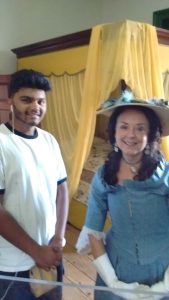
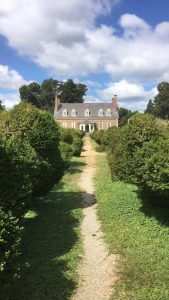
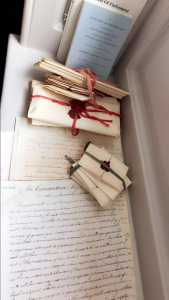


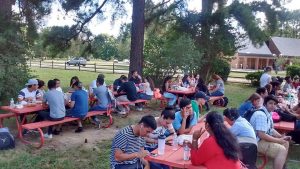
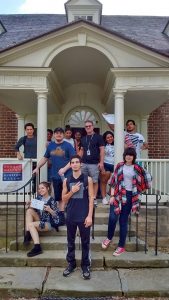
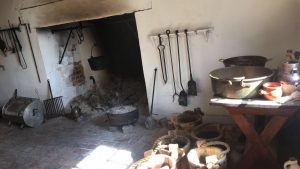

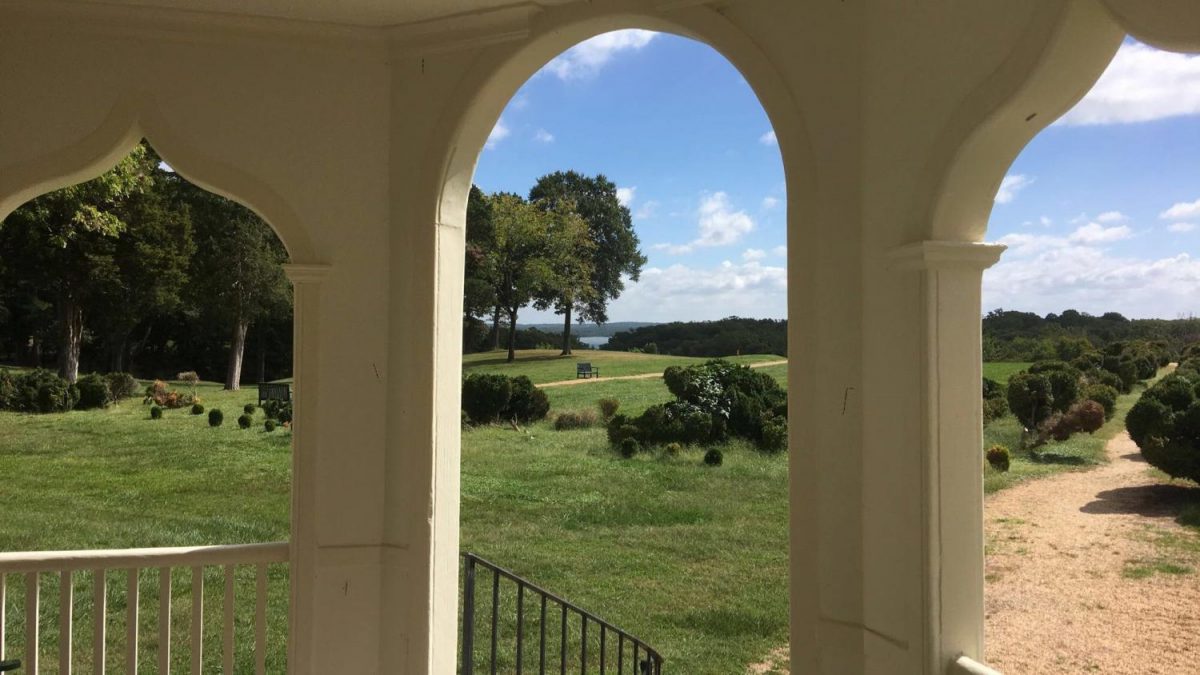

BeefCakes • Nov 1, 2018 at 8:21 am
I recently went on the field trip to Gunston Hall on the 22nd. I have been to Gunston Hall before. I didn’t remember the place until we pulled up to the front of it. I don’t recall seeing the burial grounds before so that was an interesting site to see. It is crazy to see that a house like that was considered a mansion during that time period. It makes me think about the less fortunate and what their houses must have been like. Overall, it was cool to visit again.
oceanmtnsky • Oct 30, 2018 at 8:52 am
I enjoyed going to the field trip and seeing how life used to be back in the day. All I can say is we have it easy nowadays. You have to wake up early to everything like food and wash clothes and go to school. I feel sorry for the slaves back in the days. George mason had it easy with people working for him.
The house looks small to me but it has a lot of land and the Potomac river is close to the house. Its very cool that his wife and himself are buried in his land. It’s a cool place to visit and tour I recommend it to anyone that loves history.
J$
.http://www.gunstonhall.org/
locho • Oct 23, 2018 at 12:40 pm
I recently went on the field trip to Gunston Hall. I noticed that most of the exhibits have changed form last years trip but that didn’t matter as much. This trip was important because it gave us an opportunity to see the plantation from our own perspective. I learned that at those times they lived a simple but strict life, everybody had a role which made everything pull through together. The slaves had an impact on their wealth, the staff such as the housekeepers had an important role maintaining the home. The cooks had a lot of help from the children. The children needed to know about fire safety. This was a great experience and this trip helped me to have a larger perspective about history. Thank you, Mr. Hardy!!!!
Tibet • Oct 19, 2018 at 1:59 pm
I am very exciting on field trip on this coming Monday. October 22, 2018. This is my first trip in United State Of America. I hope I can get lots of Information and knowledge.
rosewater • Jan 3, 2018 at 1:48 pm
this field trip was a good experience to learn and see how things were back then.
E23 • Oct 4, 2017 at 9:29 am
I was on the field trip. This was a good experience because I’m as government student I learn about what George Mason made it, is a good way to learn when you are on the place where some things happen.